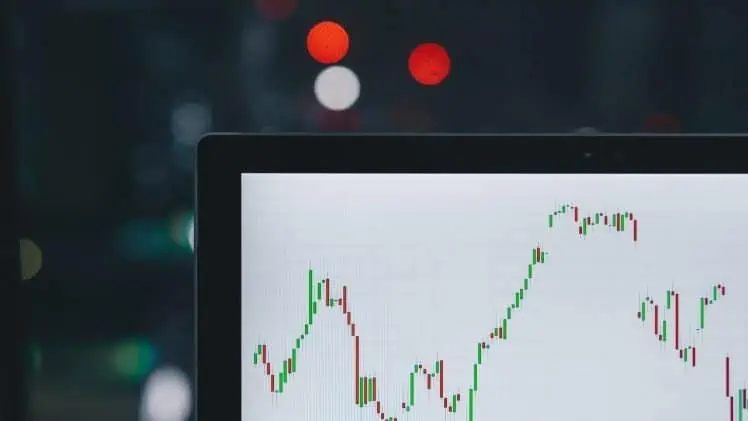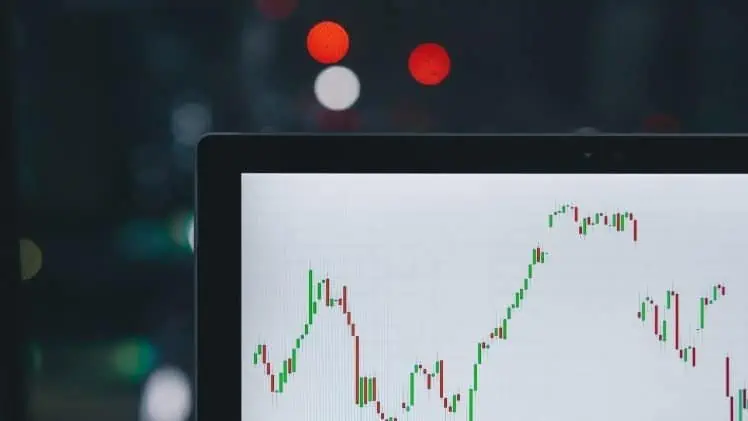Do you want to reinvest your dividends without having to think about it? Then, DRIP investing may be the tool you need. Learn everything on how to reinvest your dividends automatically with a DRIP plan.
DRIP is an acronym for Dividend Reinvestment Plan. It is an arrangement where dividends are automatically reinvested into more shares. Thus, a DRIP plan makes it easier and, at times, cheaper to reinvest dividends.
Before you join a DRIP plan, it’s good to understand how it works, its benefits and drawbacks, and how you can join.
What is DRIP Stock Investing?
When you buy dividend stocks, companies pay you periodically for holding their shares. A dividend is a way for the company to say thank you for investing in us, and dividends mostly come from the company’s profits in the previous year.
In a DRIP plan, instead of receiving that small dividend check at the end of every financial period, the company reinvests the dividend payout and buys more shares in a DRIP plan.
A DRIP plan can help maximize the value of your stock as you take advantage of the compounding returns, possible discounts, and dollar-cost averaging. But to benefit, you will need to enroll in a DRIP plan.
How Does DRIP Stock Investing Work?
A dividend is a return to shareholders on their investment. It’s usually in the form of cash payment that can be paid through check or deposited directly to the shareholder’s account.
A DRIP plan offers investors an opportunity to reinvest their cash dividend and purchase the company shares. However, they will need to buy the shares directly from the company. Since the shares come from the company’s reserve, these aren’t offered through the stock exchange.
For instance, you have 1000 shares in a company that pays $1 per share in dividends. Therefore, if you enroll in a DRIP program, you will get $1000 in dividends. However, if we assume that the company’s stock is trading at $50 when receiving the dividend, you will be allocated an additional 20 shares instead of a dividend check.
Fractional Shares
Dividend dripping isn’t limited to a whole share, and this is why these plans are unique. The companies keep good records of the percentage of share ownership. Like the words suggest, fractional shares are a fraction of a whole stock. That means you can own 1.75 of a share instead of two shares.
Now let’s assume the company shares in our example above were selling at $45 instead. That means your dividend payouts of $1000 will acquire 22.22 shares in a DRIP plan. However, not all brokerage platforms have fractional shares. So if there is money left over after buying full shares, this is usually credited into the investor’s account.
Pros of DRIP Stock Investing
Here are the benefits of dividend reinvestment plans.
- Dollar-cost averaging. When you reinvest your dividends, what you are essentially doing is dollar-cost averaging. Dollar-cost averaging is a recurring purchase of an investment instead of investing once in a lump sum. When you buy extra stocks regularly, you can spread out your purchases and have an average purchase price regardless of the state of the market.
- Immediate reinvestment. Since dividends get automatically reinvested into buying more shares, DRIP can minimize the chances of leaving your cash lying idle as you don’t have to do it manually. On the other hand, if you keep forgetting to reinvest your cash, your investment can miss out on return over time.
- Lower commissions. If you join a DRIP program through a brokerage firm, the brokerage firm may not charge a commission on the reinvested dividends. However, this varies per broker.
Cons of DRIP Stock Investing
Here are the drawbacks of DRIP investing:
- Taxation. Dividends are considered taxable income. Even if you reinvest your dividends before they hit your bank account, they will still be reported to the IRS as income. When you enroll in a DRIP program, you should remember that you may need to pay up to 20% in taxes of the dividends reinvested. You will need to have that amount in cash. Otherwise, you may have to sell some of your shares to get the cash.
- Non-diversification. After setting up a DRIP plan for a single stock, you may end up accumulating a considerable amount of that stock over time. As a result, it prevents you from diversifying and can put you at bigger risk. Therefore, you may need to keep checking your portfolio and rebalancing when necessary.
How to Start DRIP Stock Investing?
If you would like to benefit from DRIP investing, you need to have at least one share in company stock in your name. You can then get in touch with a broker to find out if they have a DRIP investment program. A transfer agent usually handles the DRIP account, but they can also direct you to the right agent.
Some brokerage firms also allow shareholders to reinvest their dividends free of charge through their plans. If you have already bought shares through a brokerage, you may want to consider this option. When you login into your online account, choose the option of reinvesting the dividends. If you have an adviser, you can call them to take you through the process.
Some brokerages, like M1 Finance, don’t offer a traditional DRIP. However, they do offer reinvestment of your received dividend across your entire portfolio, which will also contribute to the compounding effect of your portfolio over time.
Company-Operated DRIPs
Some of the companies that have significant market capitalization operate DRIPs. Examples are Johnson & Johnson and Coca-Cola, which manage their direct stock purchase plans, allowing investors to buy shares directly from them instead of through a stockbroker. They also have DRIP plans allowing investors to reinvest the dividends they earn on the shares.
Brokerage DRIPs
There are many brokerage companies out there that facilitate DRIP investing, like Vanguard or TD-Ameritrade. All you need to do is select your dividend stocks and opt-in to the brokerage of your DRIP. You will then get a payout in the brokerage account, as the form automatically reinvests in the new shares.
The use of DRIP plans with a broker is usually the easiest way of reinvesting dividends. One advantage of using brokerages is that they can offer you an opportunity to invest in DRIPs in more than one company, which can help diversify.
Third-party DRIPs
The majority of companies that pay dividends outsource the DRIPs and direct stock purchase plans to third parties, also known as transfer agents. A popular transfer agent is Computershare. You can visit their search portal to sign up for DRIPs. Remember that you may be charged a fee for the third party and company-operated DRIPs.
DIY DRIPS
If the company you would like to invest in doesn’t have a DRIP plan, brokerage, or third parties to facilitate the reinvestment, you can reinvest the dividend yourself. All you need to do is buy shares or fractional shares reflecting the dollar value of the dividends paid to you. While it isn’t as easy, it can be an option.
If fractional shares aren’t available, you can hold on to the money until you have enough to purchase a whole share.
One downside of this method is that it’s taking up more time than a traditional DRIP would. However, it can still work, and you will benefit from the compound returns as well as the dollar-cost averaging.
Want to learn more cool facts about investing? Check out What Time Do The Stock Markets Open for Trading.
Best DRIP Stocks With No-Fee DRIPs
There are several places where you will find DRIP stocks to add to your portfolio. First, you may want to check out the dividend-aristocrats, companies with a history of increasing their dividends every year for at least 25 years.
Combining DRIPS and dividend aristocrats can be powerful. Focus on companies that have increased their dividends over the last 25 years. Those will probably be an excellent addition to your dividend portfolio, which will translate into more shares for you every year.
Here are the ten leading dividend aristocrats with no-fee DRIPs:
- AbbVie Inc.
- Johnson & Johnson
- Exxon Mobil
- S & P Global Inc.
- 3M Company
- Realty Income
- Aflac Incorporated
- Federal Realty Investment Trust
- Chubb Limited
- Hormel Foods
Some companies also have a stock-buying program for their staff. Instead of paying dividends through checks, they offer their employees an opportunity to reinvest the money back into the company’s stocks. This program has become so popular that it has been extended to stockholders. Such companies include:
- 3M
- PepsiCo Inc
- Exxon Mobil
Therefore, these companies are an excellent choice for DRIP programs. When researching companies, check out their histories in dividends to determine how consistently they have been paying even if they haven’t increased their dividends every year.
In Conclusion – DRIP Stock Investing
If you are looking to grow your portfolio faster through compounding returns, DRIP investing is an excellent option to invest wisely. DRIP investing means you reinvest the dividends companies paid you to own more shares. The following year, you will increase your dividend payout and hold even more company shares.
The compounding will start slowly, and over time you’ll find you will own more and more shares. Then, when you count the stock price increase as well, your return on investment will increase.
To learn more about DRIP investing, you should consider talking to an investment or financial adviser about your goals and situation. They can help you create a portfolio plan that will work for you and your investment goal.
Jacqueline is a Pharmacist by day and a successful real estate investor by night, managing a portfolio of 3 rental properties. Co-Owner of InvestedWallet.com, inspiring people to build a life they love through the process of earn, save, invest, repeat. Join us on our journey, no matter where you are on yours.

